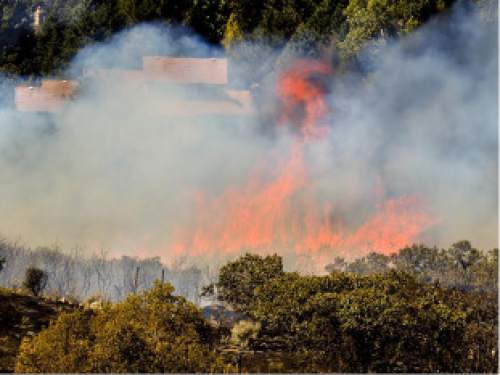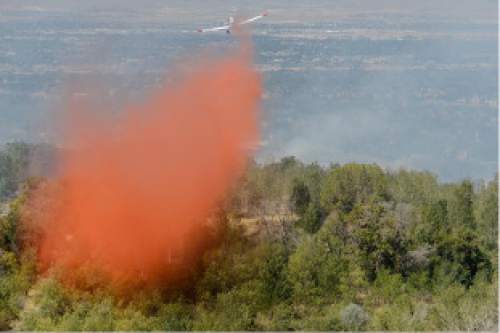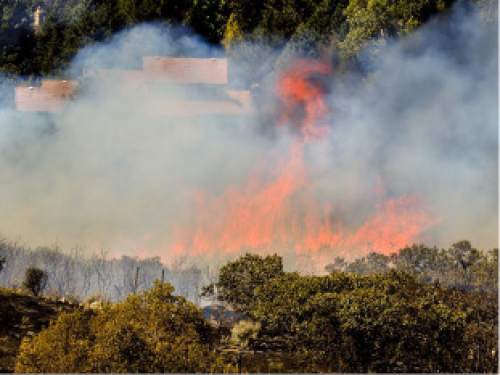This is an archived article that was published on sltrib.com in 2015, and information in the article may be outdated. It is provided only for personal research purposes and may not be reprinted.
Other Western states sizzled this summer, but Utah's wildfire season was practically cool to the touch.
Just 10,200 acres burned this year, according to new data from the Utah Division of Forestry, Fire and State Lands. That's the lowest total since at least 2001, and maybe longer.
Readily available data from the state and the federal agency that tracks wildfires only go back to 2002.
A wet May and June are being credited for the mild season.
"We didn't really get that curing of grasses until late in the summer," said Jason Curry, a wild land firefighter and spokesman for Forestry, Fire and State Lands.
Some of those late summer fires included a Sept. 1 blaze in Cottonwood Heights that forced the evacuation of an entire neighborhood. Even then, that blaze, called the Quail Hollow Fire, burned less than 30 acres.
The number of fires was fairly normal this season — 1,048. Curry said favorable weather allowed firefighters to contain or extinguish many blazes while they were small.
Curry said the Wasatch Front had just one red-flag day — a day in which wind, temperature and other conditions are ripe for fire — all season. Previous summers have seen entire weeks of red-flag warnings.
But 2015 was much worse in other states.
As of Dec. 18, this year's wildfires scorched about 9.8 million acres nationwide, according to the National Interagency Fire Center. That total makes 2015 one of only four years since 1960 to see more than 9 million acres burn across the country; the other years were 2006, 2007 and 2012.
Most of 2015's scorched earth was in Alaska, where about 5.1 million acres burned across the far northern state.
Utah's wildfires ended two months ago. The last one was the lightning-sparked Oak Grove Campground fire, east of Washington County's Signal Peak. Rain helped extinguish the 943-acre blaze by the end of October.
Utah fire officials were not expecting a quiet season this year.
The warm, dry winter put officials on edge. Fueling that anxiety, a number of grass fires popped up in February, one growing to 120 acres. The Bureau of Land Management hired 15 percent more seasonal firefighters. The North Summit Fire District, which battled the destructive Rockport 5 blaze in 2013, started training for the wildfire season a month or two ahead of schedule.
But come May, unusually heavy downpours doused those fears.
Those rains and a normal monsoon season delayed any significant wildfires through June and July. Even the timber in the higher elevations — which was said in April to be too far gone to recuperate — began to heal.
Still, wildfire season came, even if it was late. One of the larger, headline-grabbing wildfires was the Wheeler Fire near Deer Creek Reservoir in Wasatch County. The inferno, believed to have been started by an ATV, consumed about 740 acres in early September.
During the fire, a drone forced a fire-retardant-laden air tanker to divert course and dump its 500-gallon load away from its primary target.
Twitter: natecarlisle







